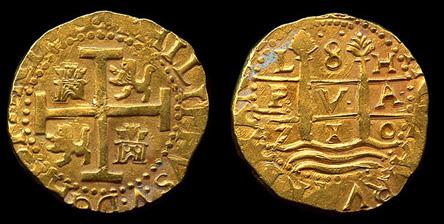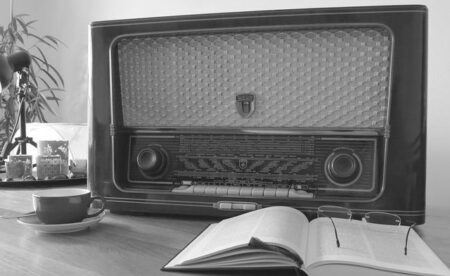Salvage teams have recovered a stunning haul of gold and silver coins valued at approximately $1 million from a 1715 Spanish treasure fleet shipwreck off the coast of Florida. The discovery, announced by the recovery crew, sheds new light on one of history’s most famous maritime disasters and promises to deepen understanding of colonial-era treasure fleets. This remarkable recovery adds a significant chapter to the ongoing efforts to unearth and preserve artifacts from the 1715 fleet, which sank during a catastrophic hurricane more than three centuries ago.
Gold and Silver Coins Valued at $1 Million Unearthed from 1715 Spanish Shipwreck
Following months of meticulous underwater exploration, a salvage team has successfully retrieved a remarkable haul of gold and silver coins from the depths of the Atlantic. These rare artifacts originate from the infamous 1715 Spanish treasure fleet, which was devastated by a hurricane off the coast of Florida. Experts estimate the collection’s worth to exceed $1 million, underscoring not only its monetary value but also its profound historical significance.
The recovered coins exhibit a variety of origins and denominations, representing the diverse currency circulated across the Spanish Empire during the early 18th century. Key highlights of the find include:
- Gold escudos minted in Mexico City and Lima
- Silver reales stamped in Seville and PotosĂ
- Rare pieces bearing the marks of King Philip V
- Coins remarkably preserved with intricate details visible
| Coin Type | Mint Location | Estimated Value |
|---|---|---|
| 8 Escudos | Mexico City | $250,000 |
| 2 Reales | Seville | $75,000 |
| 4 Escudos | Lima | $180,000 |
| 1 Real | PotosĂ | $20,000 |
Historical Significance and Preservation Efforts Surrounding the Recovered Treasure
The recovery of this extraordinary cache from the 1715 Spanish galleon not only represents a major archaeological breakthrough but also offers invaluable insights into the maritime history of the early 18th century. These coins, which include gold escudos and silver reales, serve as tangible links to the transatlantic trade routes that connected Spain to its colonies in the New World. Historians emphasize that each coin carries stories of colonial commerce, naval warfare, and the socio-economic conditions of that era, enriching our understanding of Spain’s colonial dominion and the perils faced by those navigating the Atlantic.
Preservation of the treasure has been a collaborative effort involving maritime archaeologists, historians, and local authorities to ensure that these artifacts are protected for future generations. Key steps include:
- Utilization of cutting-edge conservation techniques to prevent corrosion
- Secure storage in climate-controlled environments
- Public exhibitions and educational programs to promote awareness
| Preservation Method | Purpose |
|---|---|
| Electrochemical Stabilization | Neutralizes salt deposits |
| Microclimate Storage | Prevents oxidation |
| Digital Archiving | Documents artifact provenance |
These efforts not only safeguard the physical integrity of the treasure but also uphold its cultural and historical value, inviting ongoing study and public engagement with this remarkable maritime legacy.
Challenges Faced by Salvage Crew During the Underwater Recovery Operation
The recovery of over $1 million worth of gold and silver coins from the 1715 Spanish shipwreck was met with considerable obstacles that tested the expertise and endurance of the salvage crew. Operating deep underwater, the divers faced unpredictable currents and limited visibility that complicated navigation around the fragile wreck site. Additionally, the structural remains of the centuries-old ship required delicate handling to prevent further damage to both the artifacts and the surrounding environment. Equipment malfunctions and the constant threat of decompression sickness demanded precise coordination and meticulous planning during every dive.
- Severe underwater visibility impairments due to sediment stirred up during recovery
- Strong and shifting ocean currents hindering access to key sections of the wreck
- Strict preservation protocols to avoid damaging centuries-old artifacts
- Managing dive time limits under hazardous conditions to ensure crew safety
Further complicating the operation was the challenge of accurately documenting and cataloging each recovered item in an underwater environment. The crew employed advanced mapping techniques and underwater photography, often battling technical issues and the relentless pressure of time. Below is a concise breakdown of some operational hurdles encountered throughout the mission:
| Challenge | Description |
|---|---|
| Visibility | Less than 2 meters due to stirred silt |
| Currents | Up to 3 knots, changing direction unpredictably |
| Dive Time | Limited to 30 minutes per dive for safety |
| Equipment | Frequent maintenance to prevent failure underwater |
Expert Recommendations for Future Shipwreck Salvage and Artifact Conservation
Salvage operations targeting historic shipwrecks like the 1715 Spanish fleet demand meticulous planning and state-of-the-art technology to maximize artifact recovery while minimizing damage. Experts advocate for enhanced use of remotely operated vehicles (ROVs) equipped with high-resolution sonar and 3D imaging to map wreck sites before any physical interaction. This approach aids in preserving the integrity of the site and helps in identifying sensitive or valuable areas that require prioritized extraction. Additionally, strict collaboration with maritime archaeologists and conservation specialists ensures that recovery efforts are balanced with scientific research and historical documentation.
Once artifacts surface, immediate and careful artifact conservation is paramount to prevent deterioration caused by exposure to air and fluctuating temperatures. Employing controlled desalination tanks and stabilizing solutions can halt corrosion, especially for delicate metals like gold and silver coins discovered in oyster-encrusted treasure chests. Experts recommend the following best practices:
- Rapid stabilization: Immediate placement in hydration environments tailored to each artifact’s material composition.
- Documentation: Comprehensive cataloging using digital photography and metadata input to track provenance and conservation history.
- Ongoing monitoring: Regular assessments to address emerging conservation challenges during storage and display phases.
| Phase | Key Focus | Recommended Techniques |
|---|---|---|
| Pre-salvage | Site mapping | High-res sonar, 3D imaging |
| Salvage | Artifact retrieval | ROVs, archaeologist oversight |
| Post-salvage | Conservation | Desalination tanks, stabilization |
To Conclude
The remarkable recovery of $1 million worth of gold and silver coins from the 1715 Spanish shipwreck marks a significant chapter in maritime archaeology and treasure salvage. As efforts continue to uncover more artifacts from the historic wreck, the find not only highlights the enduring allure of sunken treasures but also offers valuable insights into Spain’s colonial past and the perils faced by ships navigating the treacherous Florida coast over three centuries ago. The salvage team’s discovery stands as a testament to the ongoing fascination with underwater exploration and the stories that lie beneath the waves.




